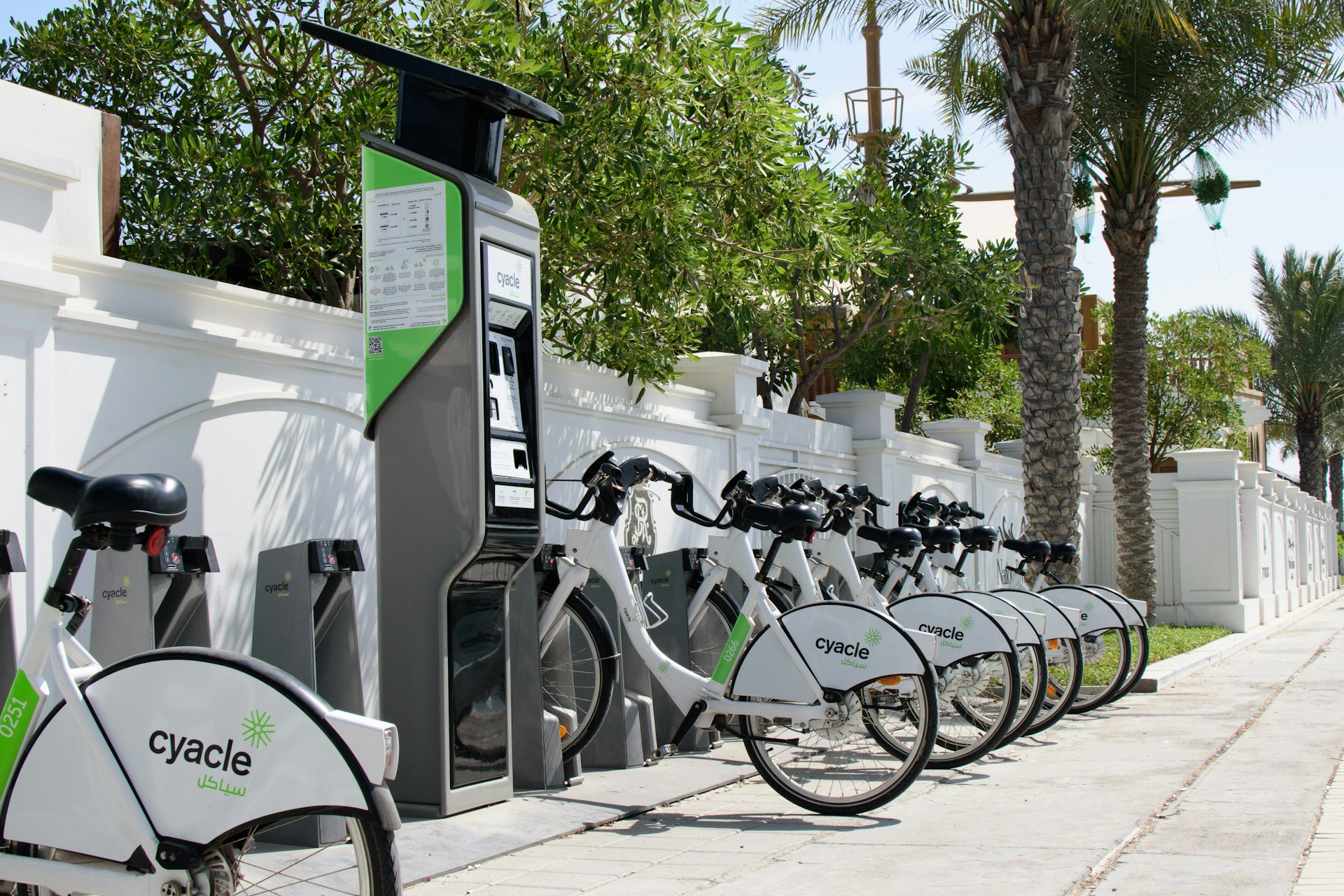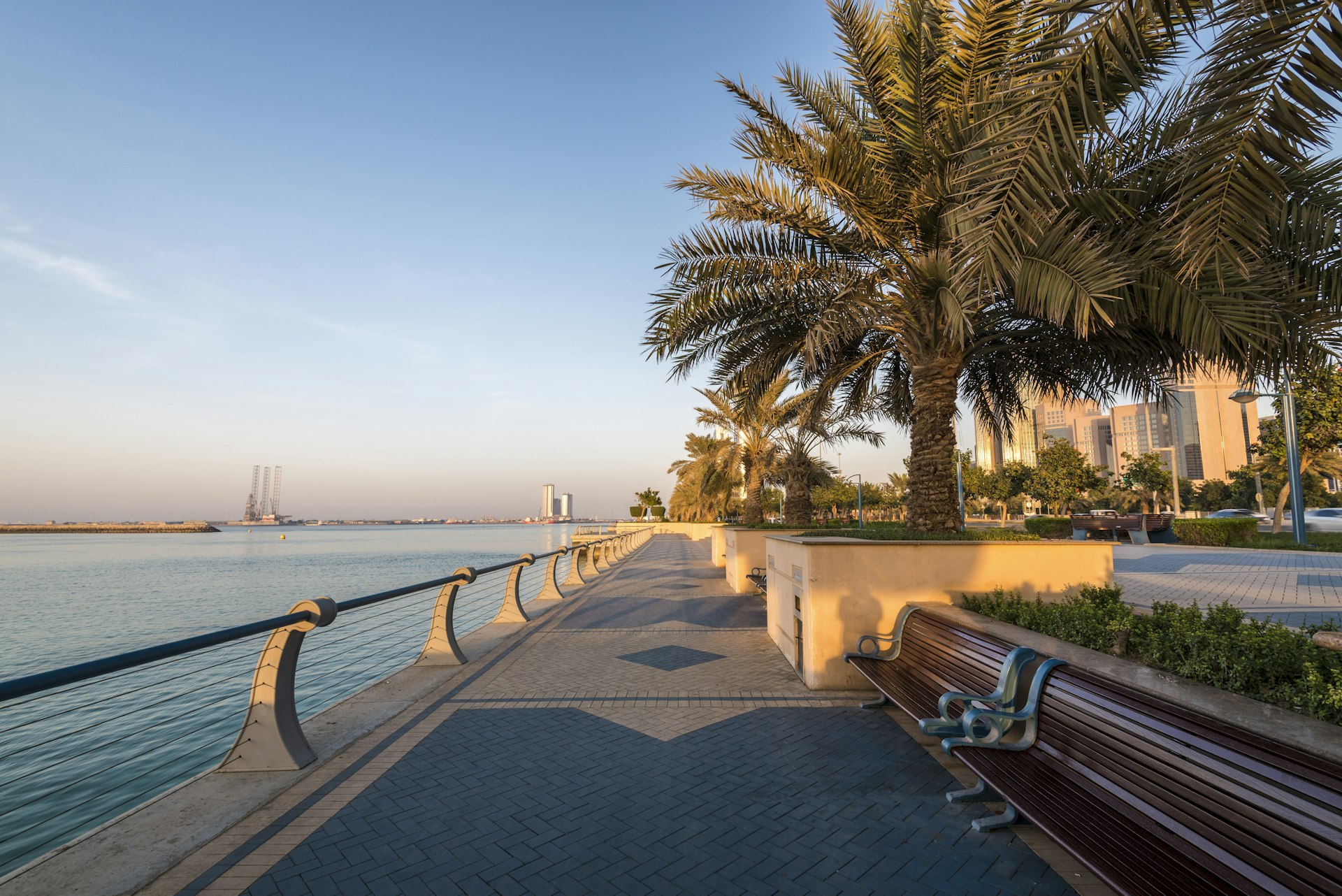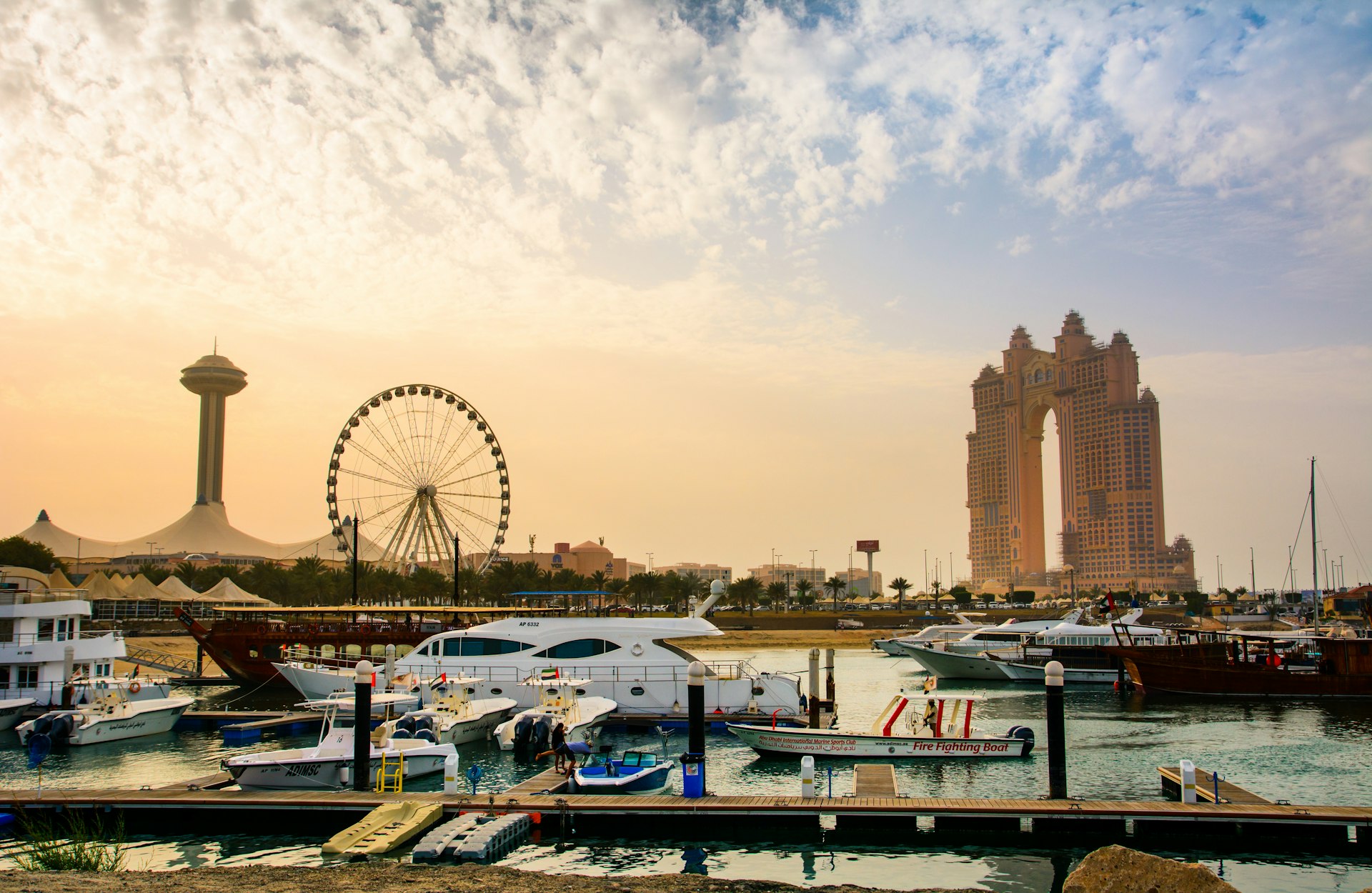The wealthiest Emirate, and capital of the UAE, is where the nation puts on its smartest face. More conservative than its glitzy partying neighbor, Dubai, Abu Dhabi’s ever-evolving landscape includes ultra-luxe hotels, modern mega architecture and deep-rooted tradition.
Despite being the capital, Abu Dhabi’s city area is actually smaller than neighboring Dubai and slightly less connected (its metro system is still in the planning phase). The city, combined with its sprawling desert outskirts, covers a total land mass of roughly 90% of the whole nation. While getting around the city is easy and affordable on public transport, your own wheels are required for exploring Abu Dhabi’s furthest corners.
Jump on the bus for an inexpensive city tour
Buses are by far the cheapest way to navigate Abu Dhabi’s bustling city, and fares start from Dhs2 (US$0.50) per ride. They also conveniently run 24 hours a day and are air-conditioned, offering cool respite from the strong summer sun. The city has more than 100 air-conditioned bus shelters, minimizing the time you’ll need to stand around in the heat. Fares are paid either with two coins (put them in the box on the bus) or by charging up a Hafilat Smart Card (available from shopping malls, convenience stores and bus stations). Routes are plentiful, with more than 70 covering much of the city. Visit the Integrated Transport Centre website for schedules. Three long-distance buses (taking around 2 hours) also connect Dubai with Abu Dhabi via the E11 road and cost from Dhs25 (US$7).
Cruise the shorelines on a scenic water taxi
One of the most fun ways to travel in Abu Dhabi is by water taxi (or abra). These operate around the islands, for example from Al Aliah to Saadiyat Island and Dalma Island to Al Deana and from Yas Bay. Water taxis can also be used between Yas Marina Khor Al Maqta Hotels, the Eastern Mangroves and Yas Island. Along the way are gorgeous views of the Sheikh Zayed Grand Mosque, wildlife-rich mangroves, and fancy hotels. Fares start from Dhs25 one way (US$6.80), pre-book to secure a spot.
Zoom from point to point in taxis and ride-shares
Taxis are abundant in Abu Dhabi and relatively cheap compared with other world cities, with fares starting at Dhs15 (US$4) and Dhs1.82/km (US$0.50) thereafter. These can be hailed down in the street or requested via the Abu Dhabi Taxi app. Ride-hailing apps available include Uber and Careem. These are all air-conditioned services and are the most convenient when navigating from point to point.

Tear around the tracks and desert on two wheels
Cycling is restricted on many roads, pavements and highways, but certain areas have designated bike tracks including the Corniche Bike Track and Al Hudayriat Island Track. There are more than 50 bike-docking stations in Abu Dhabi, and biking is an easy scenic way to get around during the cooler winter months. Download the Careem Bike app to find the closest ones to you, set up an account, and choose a payment method to pay daily, weekly or monthly. For further-flung adventures in the desert, you can rent mountain and fat bikes from companies such as Fun Ride Sports.
Rent your own wheels for freedom and adventure
Car rental is the way to go to get out of the city and explore Abu Dhabi’s wider reaches from the soaring 934ft (300m) high Moreeb Hill – the UAE’s highest sand dune – and the peaceful seclusion of the Liwa Desert to the Jebel Danna port, where you can board the ferry to Sir Bani Yas island (home to the Arabian Wildlife Park and 11,000 free-roaming animals, including Arabian oryx, gazelles, plus cheetahs, giraffes and hyenas).
International car rental companies offer vehicles at Abu Dhabi International Airport and around the city, with add-ons including insurance, breakdown cover, and car seats for young children. Rates are competitive. Parking is available for free at many malls and on residential streets, public parking tariffs start from Dhs2 (US$1).
Set off on foot during the winter months
Temperatures can reach almost 122°F (50°C) in the summer months, which makes long-distance walking around the city a sweaty (and potentially dangerous) endeavor. That said, walking in winter is a fabulous way to navigate, but note that busier roads often do not have pavements. Plan your route before you set off, and always carry water (during winter as well as summer).

Accessible travel in Abu Dhabi
People of Determination (people with disabilities) and those over 60 ride free of charge on Abu Dhabi’s public buses, which are wheelchair accessible. Wheelchair users can also pre-book a Tawasul taxi for point-to-point transfers with its range of Mercedes-Benz VITO vehicles with high roofs and hydraulic wheelchair lifts. Many walking pathways are wheelchair accessible, including the Corniche. Corniche Beach, plus Al Bateen Public Beach and Al Bateen Ladies Beach also have wheelchair paths down to the ocean.
